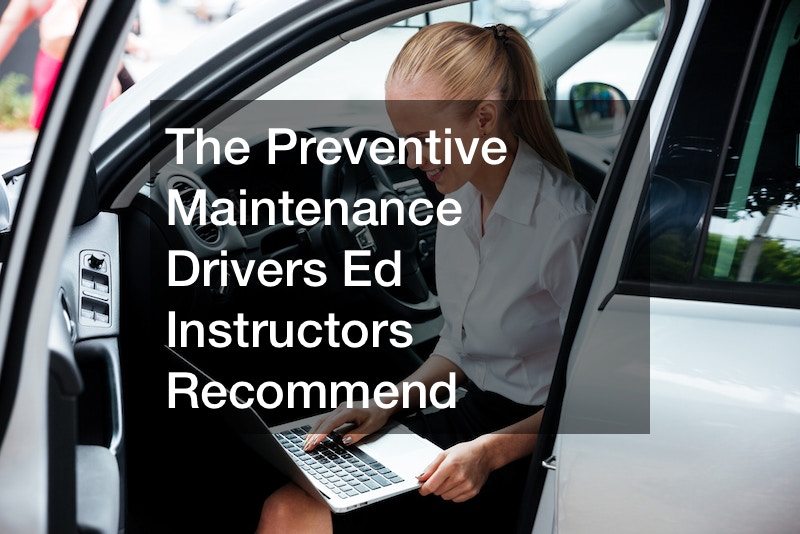
Owning a truck offers versatility, power, and the ability to tackle heavy loads, but every owner eventually wants to enhance performance, comfort, and appearance. From drivetrain improvements to cosmetic touches, knowing which upgrades deliver the greatest return on investment ensures you spend wisely. This comprehensive guide will walk you through assessing your current setup, choosing the right parts and services, and maintaining your enhancements over time. Whether you’re aiming for better towing capability, improved ride quality, or a refreshed exterior, these insights will help you plan strategically and avoid common pitfalls.
Assessing Your Truck’s Current Condition
Before diving into upgrades, take stock of your truck’s baseline condition. A thorough inspection identifies wear points, performance bottlenecks, and body damage. Start by reviewing maintenance records: oil-change intervals, previous tire rotations, and any past semi truck repair work. Document fluid levels, brake-pad thickness, and the state of hoses and belts.
A visual survey helps spot paint chips, dents, or rust that may require paintless dent repairs or more extensive subaru auto body repair services. Note any suspension sagging or uneven tire wear, as these issues influence both ride comfort and handling. By pinpointing areas of need, you can prioritize upgrades—whether mechanical or cosmetic—that offer the biggest benefits.
Engine and Performance Enhancements
Once you know your truck’s health, consider performance-oriented upgrades. A cold-air intake and high-flow air filter improve throttle response and can boost fuel efficiency by ensuring cleaner, denser airflow to the engine. Pair this with a more aggressive exhaust system to reduce backpressure and free up additional horsepower.
For those seeking a noticeable power increase, aftermarket tuning—such as a performance tune or programmable engine control unit (ECU)—adjusts fuel maps and timing. Professional shops can calibrate custom tunes, optimizing for towing demands or daily driving. Always verify compatibility with your model’s drivetrain and emissions regulations to avoid legal or warranty issues.
Transmission Upgrades and Replacements
The transmission handles immense torque, especially under load. If you tow heavy trailers or haul bulky equipment, stock gearing may falter over time. Upgrading to a heavy-duty torque converter and adding an auxiliary transmission cooler helps manage heat and wear.
When a transmission reaches the end of its service life, quality transmission replacements can restore smooth shifting and reliability. Opt for rebuilt or remanufactured units from reputable suppliers, and insist on a warranty. Professional installation at experienced car repair shops ensures proper alignment, prevents leaks, and extends the lifespan of the new unit.
Suspension and Tire Care
A comfortable ride and precise handling hinge on a healthy suspension system. Upgrading shocks and struts to gas-charged or adjustable models smooths out rough roads and reduces body roll. Pair this with progressive-rate coil springs or helper springs when carrying heavier loads.
Routine tire rotations and balancing every 5,000 to 7,000 miles promote even wear, extend tread life, and preserve traction. When it’s time for new tires services, select tires rated for load capacity and intended use—whether highway driving or off-road adventures. Matching tire type to driving conditions optimizes performance and fuel economy while reducing premature wear.
Exterior Upgrades and Body Work
Boost curb appeal and protect against corrosion by refreshing the exterior. A professional paint job or high-quality wrap shields the metal from UV damage and road debris. For minor dents and dings, paintless dent repairs restore panel integrity without costly repainting, preserving factory finishes.
When accidents happen, certified subaru auto body repair shops use genuine OEM parts and follow precise collision repair guidelines. Proper structural repairs maintain safety standards and resale value. After bodywork, consider adding protective elements like bed liners, grille guards, or skid plates to keep your truck looking sharp under demanding conditions.
Paintless Dent Repairs for Minor Damage
Small dents from hail, shopping carts, or parking-lot mishaps can mar your truck’s appearance and reduce value. Paintless dent repairs provide a cost-effective solution by pushing dents out from behind the panel without affecting the original paint.
Qualified technicians use specialized tools and lighting to access damaged areas through wheel wells or door jambs. This method avoids filler or repainting, preserving factory warranties and finishes. Scheduling these repairs promptly prevents moisture intrusion and rust formation, extending your truck’s lifespan.
Choosing Quality Paint and Wrap Services
A fresh finish not only looks great but also defends against corrosion and surface fading. Automotive-grade paint coupled with epoxy primers ensures long-lasting adhesion. For a faster, reversible solution, vinyl wraps offer color changes, custom graphics, and added UV protection.
When selecting a provider, evaluate their facility’s cleanliness, equipment, and adherence to paint-spraying best practices. Ask to see before-and-after photos and verify they use high-quality paint and wrap materials. Proper surface preparation—sanding, degreasing, and priming—is crucial for a flawless application.
Interior Comfort and Utility Additions
Enhancing the cab’s comfort makes every drive more enjoyable. Upgrading to heated and ventilated seats or installing memory-foam seat covers can reduce fatigue on long hauls. A premium stereo system with smartphone integration adds entertainment and navigation ease.
For cargo management, consider adding overhead storage consoles, locking center consoles, or seat-back organizers. Floor liners tailored to your truck’s model protect carpeting from mud, spills, and wear. Upgrades like illuminated kick plates or ambient lighting create a refined interior atmosphere.
Selecting the Right Truck Accessories
From practical to purely aesthetic, truck accessories let you tailor your rig to your lifestyle. A robust truck accessory such as a heavy-duty bed rack expands hauling capacity for kayaks, lumber, or bikes. Bed rails, toolbox mounts, and tie-down anchors help secure loads safely.
Exterior accessories—like LED light bars, fender flares, and window visors—combine style with functionality. When installing electronic addons, ensure wiring harnesses are routed professionally to prevent shorts or battery drain. Consult forums and product reviews to find accessories known for durability and fitment.
Finding Dependable Car Repair Shops and Service Providers
Even the best upgrades require periodic maintenance. Establish a relationship with trustworthy car repair shops that communicate clearly, honor warranties, and provide written estimates. Seek providers accredited by the Automotive Service Excellence (ASE) program or preferred by your truck’s manufacturer.
Ask for referrals in local owner groups or online communities. A reputable shop will explain repair options in layman’s terms, helping you weigh performance benefits against costs. Scheduling routine inspections—covering brakes, fluids, and belts—catches developing issues before they escalate into major repairs.
The Importance of Regular Truck Washes and Detailing
Dirt, road salt, and brake dust not only dull your truck’s appearance but can accelerate corrosion. Regular truck washes, especially in winter climates, remove damaging contaminants and preserve paint integrity. Automatic washes offer convenience, but manual washing with pH-balanced soap and soft mitts prevents swirl marks.
Periodic detailing—including clay-bar treatment, polish, and sealant—restores shine and adds a protective layer against UV rays. Cleaning underbody components and wheel wells stops rust before it spreads. Professional detailers also address interior surfaces, preserving dashboard plastics and leather upholstery from cracking.
Planning for Heavy-Duty Tasks and Semi Truck Repair
If you use your pickup for commercial or agricultural work, upgrade components to handle extra stresses. Reinforced towing hitches, upgraded brake packages, and high-capacity cooling systems reduce strain when pulling large trailers. Heavy-duty air springs or suspension kits stabilize heavy loads and improve braking performance.
For businesses operating fleets of tractor-trailers, coordinating semi truck repair schedules minimizes downtime. Mobile service providers can perform oil changes, tire service, and light repairs on-site. Keeping a preventive-maintenance calendar aligned with mileage intervals ensures continuous operation and avoids costly emergency breakdowns.
Emergency Preparedness and Towing Service Considerations
No matter how well you maintain your truck, emergencies occur. Establish a plan that includes roadside assistance or a towing service subscription. Many providers offer coverage for jump-starts, lockouts, fuel delivery, and winching in off-road situations.
Keep a basic emergency kit onboard: jumper cables, tire inflator, flashlight, first-aid supplies, and reflective triangles. For remote-area adventures, consider a portable air compressor and recovery straps. Knowing your towing provider’s terms and response times reduces stress when trouble strikes.
Maximizing Resale Value Through Documentation
Well-documented upgrades and maintenance records boost resale value. Keep invoices, service logs, and receipts for every modification—from transmission replacements to bed-liner applications. A clear history demonstrates conscientious ownership and justifies asking prices.
When selling, provide potential buyers with records and allow them to inspect upgraded components firsthand. Highlight modifications that enhance safety and performance, such as reinforced suspension parts or aftermarket lighting systems. Transparency builds trust and speeds up the selling process.
Balancing Cost vs. Benefit
Every upgrade carries a price tag—and not all modifications deliver equal returns. Before investing, research performance gains, durability improvements, and market demand for specific enhancements. For example, adding high-end audio may not increase resale as much as a well-engineered suspension kit tailored for towing.
Obtain multiple quotes for parts and labor, and consider DIY installation only when confident in your skills. Factor in long-term maintenance costs—some performance parts require more frequent servicing. A strategic approach ensures you prioritize upgrades that align with your driving habits and budget constraints.
Sustainable Upgrades and Eco-Friendly Options
Modern truck owners also consider environmental impact. Upgrading to low-rolling-resistance tires can improve fuel economy without sacrificing traction. Synthetic lubricants and bio-based fluids reduce environmental contamination while maintaining component protection.
When replacing engine parts, look for remanufactured or recycled components certified to meet OEM standards. Proper disposal of old oil, batteries, and filters through recycling programs prevents hazardous waste accumulation. Eco-conscious upgrades support both your wallet and the planet.
Community Resources and Owner Networks
Joining local truck clubs or online forums connects you with experienced enthusiasts who share tips on cost-effective upgrades and trusted vendors. Group buys for bulk-purchasing parts, organized tool libraries, and shared workspace garages can lower individual expenses.
Swap meets and vendor events often feature discounted accessories, demonstration installs, and Q&A sessions with industry experts. Engaging with fellow truck owners provides hands-on learning opportunities and insider knowledge that guide your upgrade decisions.
Final Checklist for Your Upgrade Project
Inspection Complete: Verify baseline condition and document existing mileage.
Goal Setting: Define performance, utility, or aesthetic priorities.
Budget Forecast: Allocate funds for parts, labor, and unforeseen expenses.
Provider Vetting: Research car repair shops, certified body specialists, and detailers.
Installation Scheduling: Plan downtime, coordinate lenders if you’re renting a tow truck or utilizing trucks for rent.
Post-Upgrade Testing: Conduct test drives, inspect for leaks, and verify proper component function.
Record Updates: File all receipts and service logs for future reference and resale.
Upgrading and improving your truck is a rewarding endeavor that enhances performance, comfort, and appearance. By methodically assessing your truck’s condition, setting clear objectives, and choosing reputable providers for tasks like transmission replacements, tire rotations, paintless dent repairs, and semi truck repair, you ensure long-term satisfaction and value retention. Balancing the cost of parts and labor against the benefits—while documenting every step—supports future resale and eases maintenance planning. Whether you’re equipping your rig with off-road accessories, refreshing its exterior, or fine-tuning its drivetrain, a strategic approach helps you invest wisely. Start planning your next upgrade today, and watch your truck transform into the dependable, personalized machine you envision.




